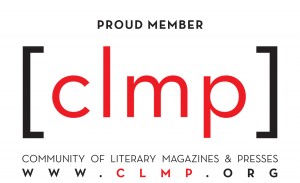by Corrine Watson
September 17, 2024
I Never Said I Was Brave by Tasneem Jamal; House of Anansi Press; 262 pages; $19.00.
Tasneem Jamal’s I Never Said That I Was Brave explores the complexities of identity shaped by families, friendships, and culture. The story follows an unnamed narrator as she reflects on the life of her lifelong friend, Miriam, two years after her suicide. Jamal uses this perspective to not only examine this tragedy but the ways we see ourselves through the context of another. The narrator explains, “If I try to make you understand, perhaps, I will understand — not only Miriam’s choices, but also mine."
Jamal expands on this intent as the narrator reveals much of her own life as an entangled part of Miriam’s. Throughout the novel, the author expertly captures the nuances of shared experience and friendship, showing how those closest to us can cause the deepest harm, and are, in many ways still a mystery.
The narrative jumps around in time, but there is a sense of linear storytelling as the contextual pieces of the characters' lives are revealed gradually. This structure captures the ways thought and memory are non-linear, fragmented, and easily derailed by related, but perhaps irrelevant tangents. Jamal illustrates how memory is often unreliable. This is captured in the ways the narrator recognizes that she is “informing [her] earlier memories with later ones." This approach gives the reader a more detailed explanation of the characters decisions as hindsight allows the narrator to view these events with more clarity.
The girls start off in similar circumstances. Their families immigrated together from Uganda to Canada, and glimpses of their childhood show the ways that they struggle to feel assimilated while still a part of two cultures. Throughout the novel, Jamal illustrates the contrasting ways the girls handle this diaspora as the narrator describes being bullied in school or how Miriam goes through phases of trying to present as more white. One of the ways both girls work through their relationship to their parents’ traditions is in the way they differ on their views of women. Miriam takes on the more liberal stance, arguing that they were taught that women in their culture were nothing without men. Their own mothers instilled this view as Miriam’s mother struggled through two divorces and faced infidelity and abuse, but still considered herself worthless if she didn’t have a husband. And even though her parents stayed together in spite of their hardships, the narrator maintained ideals of purity, and submissiveness throughout her youth.
Readers see the differences in their ideology clearly in a compelling conversation they have regarding sati, which is the practice of immolation among the widows of a warrior caste. The narrator argues that sati is a way to make a final autonomous choice to avoid a potentially worse future, a future confronted by rape or enslavement. However, Miriam argues that “There’s no choice. What else could they do? Opt out and go live as single women? It’s erasure,” she said. “It’s murder. No matter how you dress it up." This section stands out not only to highlight the character’s different interpretation of this act, but because the narrator wants to understand Miriam’s choice to end her own life. At what point did Miriam feel like she had no other choice? It angered the narrator when Miriam came to her for sympathy because by the end the narrator couldn’t handle the audacity Miriam had to take everything she wanted at the expense of others and still claim to be unhappy. The way Jamal presents this, suggests that the narrator feels a sense of guilt for betraying her friend in the end not only for exposing her selfish behavior, but for not understanding the depths of Miriam’s depression and seeing when she needed help, not only at the end, but as children and in every moment leading up to her death.
While pessimistic towards love, Miriam craves attention. Rather than giving a speech about the narrator and her long term partner, Miriam describes the theory of quantum entanglement in terms of friendship: “We say a pair of friends is entangled when information about one improves our knowledge about the other." In hindsight, the narrator begins to understand that “Her speech wasn’t about a romantic couple at all. It was about us: Miriam and me. It was about our entanglement."
The novel itself reflects this entanglement as Jamal captures this theory perfectly because there is perhaps no other person who holds the most complete knowledge of who Miriam was. The narrator often sees herself as a passive character in her own life, and particularly around Miriam. As a reader, we can see how this passiveness serves as a stark foil to Miriam's boldness, or rather, audacity, as her actions are rarely in service to anyone but herself. This perspective allows Miriam to take on a larger than life space in the narrator’s life as she observes the impact of Miriam’s presence in contrast to her own. In a group, she notes that she sees “The men hovering around Miriam like they were lowly planets and she was the glorious sun. I'm not sure what I was in this metaphor; I suppose I was empty space." In other instances, the narrator sees herself as a ghost or a shadow. The way Jamal pulls in these metaphors highlights Miriam’s interest in dark matter and astrophysics, and the ways she pulls the narrator into utilizing similar language to describe herself as a part of a vast universe.
Throughout the narrative, the invisible pull of cosmic forces keeps these characters intertwined as there were many moments where their childhood friendship would naturally fade, but the narrator was pulled back into Miriam’s orbit. Jamal is illustrating how Miriam needs the consistency of the narrator’s friendship because she is her only constant. Her parents divorced, her brother died, she’s easily bored with romantic relationships, but the narrator is always there for her to fall back on as a confidant even when they disagree. For Miriam, it matters less that the narrator doesn’t always approve of her choices, but that she is the person who knows her the best. Yet as the narrator struggles to understand what led Miriam to end her life, it’s clear that even she didn’t know her as well as she should have.
Whether driven by cosmic forces or the comfort in familiarity, I Never Said That I Was Brave captures a unique perspective on the complexities of a friendship that surpasses time, distance, and hurt. Through this exploration, Jamal takes a deeper look at the intricacies of human connection showing how profound impacts are made even when hardships don’t bring friends closer together, and how those who know us the best can still hold the deepest secrets.
__________________________________________________________________________________________________________________________________________________________________________
__________________________________________________________________________________________________________________________________________________________________________
__________________________________________________________________________________________________________________________________________________________________________
Lives in Orbit: Exploring Identity through Friendship in I Never Said that I Was Brave by Tasneem Jamal
FICTION REVIEW
Image by Jan van der Wolf from Pexels
Corrine Watson is a freelance writer and editor based in Charlotte, NC. Her work has appeared in Wretched Creations and the Southern Review of Books. Follow her on Twitter @CorrineWatson6.
__________________________________________________________________________________________________________________________________________________________________________
__________________________________________________________________________________________________________________________________________________________________________
© 2024 Iron Oak Editions
Stay Connected to Our Literary Community. Subscribe to Our Newsletter





